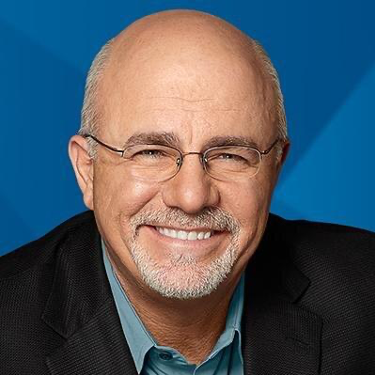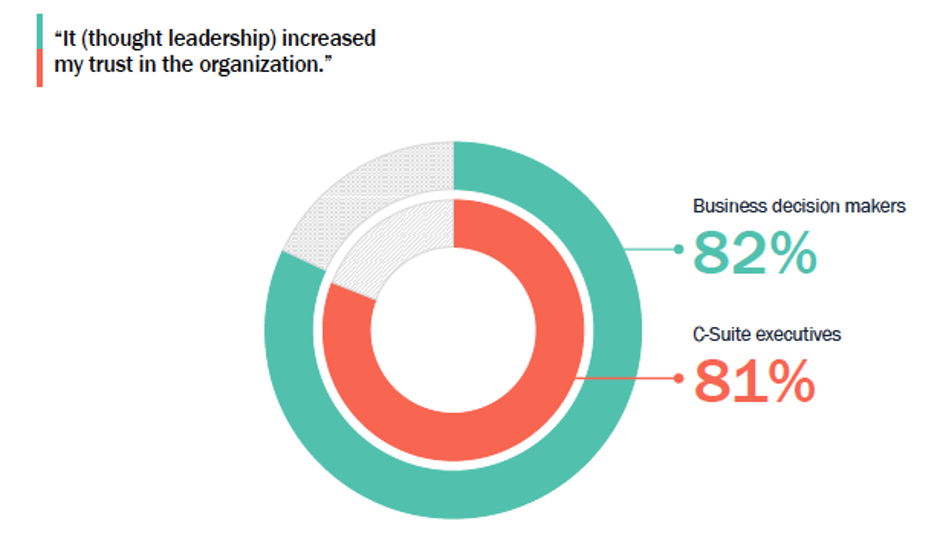Thought leadership.
It’s one of those mystical buzzwords that often gets mistaken as a token of self-importance.
But in reality, thought leaders, or experts, are often humble people who want to share deep and meaningful insights in their field of expertise. And, when used properly, they can play a dramatic role in building credibility around your brand.
In this guide, we’ll take a look at what thought leadership is, why it’s important for your brand, and who should consider becoming a thought leader. Finally, we’ll look at how to leverage thought leadership for your brand.

Manage all your social media accounts in one place.
Craft, schedule, & auto-post content to all your social channels, then track analytics and manage interactions from a single, easy-to-use dashboard.
What is Thought Leadership?
Thought leaders are experts in their business who know their audience and competitors.
According to Kelsey Raymond, co-founder and CEO at Influence & Co., a thought leader is an:
“industry expert who shares their expertise with a broader audience to educate, improve, and add value to the industry as a whole.”
Thought leadership content takes many forms, including blog posts, articles, guest contributions, infographics, podcasts, videos, books, speaking engagements (live and virtual events), webinars, white papers, original research papers, and an ongoing social media presence.
The goal of thought leadership marketing is not to create sales heavy content or self-promotional content of your brand. Instead, you should treat it like content marketing, where you aim to educate, inform, and engage your audience so that you become a trustworthy source in your industry.
Thought Leadership Examples
Let’s take a look at four thought leaders from different industries.
Kimberly Bryant

Kimberly Bryant is the founder of Black Girls Code, a non-profit organization that focuses on providing technology education for African-American girls. She uses her industry expertise to share thought leadership content on different platforms.
Kimberly has been nationally recognized as a thought leader for her work to increase opportunities for women and girls in the technology industry.
She has received numerous awards, including a White House “Champion of Change” for her work in tech inclusion and for her focus on bridging the digital divide for girls of color, the prestigious “Jefferson Award for Community Service,” and was named by Business Insider on its list of “The 25 Most Influential African-Americans in Technology.”
Neil Patel

Neil Patel is a recognized digital marketer and co-founder of Crazy Egg, Neil Patel Digital (Agency), and the Ubersuggest marketing tool.
He’s been recognized as a top 100 entrepreneur under the age of 30 by President Obama and a top 100 entrepreneur under the age of 35 by the United Nations.
Neil’s thought leadership content is spread across his own blogs, YouTube channel, podcast, and guest publications such as Forbes and Entrepreneur, plus he has millions of fans on social media.
Dave Ramsey

Dave Ramsey is an expert in finances who helps counsel people on paying off their debts. His advice is based on his own experience of losing everything, rebuilding his life, and his quest to manage money properly.
Ramsey produces thought leadership content via his radio show, books, podcasts, training resources, plus tools on budgeting, real estate, and investment planning.
His weekday radio show alone reaches 16 million combined weekly listeners, and he has millions of fans across social media.
Thibaud Clement

Here at Loomly, our co-founder and CEO Thibaud is recognized as an expert on remote working and branding.
As well as numerous interviews and appearances on podcasts, his thought leadership content on remote working has featured on Forbes, TechRepublic, HR Daily Advisor, HR Technologist, and Home Business Magazine.
While his opinions on branding have appeared in industry publications such as Brandingmag, MarketingProfs, Duke Of Digital, LegalZoom, and Martech Series.
Why is Thought Leadership Important for Brands?
Consumers and buyers spend a lot of time reading thought leadership content — and that thought leadership informs B2C & B2B purchasing decisions.
According to research from Edelman and LinkedIn:
- 58% of respondents read one or more hours of thought leadership per week.
- 55% of respondents said they use thought leadership to vet organizations they may hire.
While Marketing Insider Group reports:
- Nearly half of the C-suite vet an organization by its thought leadership.
- 81% said their trust increases after engaging with thought leadership content.

The Benefits of Thought Leadership
John Hall, the co-founder at Influence & Co., reckons there are five brand and business benefits of thought leadership.
1. It builds trust and credibility
By sharing your experiences and expert knowledge, you’ll be perceived as a trustworthy and authoritative figure that people look to when they need advice or guidance.
2. It helps you stand out
Not everyone wants to be a thought leader. But if you have the time and drive to share top-notch content consistently, then you can stand out from the crowd.
3. It aligns with your content marketing strategy
Thought leadership content fits in with your brand’s content to make one cohesive strategy. You have all the same platforms available to share valuable content with your target audience.
4. It creates a culture of learning
As you share your expertise, you’ll inspire others in your business to learn and subsequently share their knowledge, too.
5. It’s self-sustaining
It takes time and effort to establish yourself as a thought leader, but as long as you’re consistently producing high-quality content, it’s self-sustaining. That means, each time you reach a new audience, your entire back catalog gets viewed and renewed.
Who Should Consider Thought Leadership?
Thought leadership is important for both B2B and B2C brands.
Although it’s more often associated with B2B brands, consumers also benefit from thought leadership, as seen with the example of Dave Ramsey above.
Thought leadership content could help anyone involved in the business and consumer decision-making process.
Sometimes there’s a misconception that leaders, i.e. C-level executives, directors, and managers, are the only employees allowed to be classed as thought leaders. But in reality, thought leadership can come from anyone within the company.
Product managers, designers, customer service reps, salespeople, and marketers all have expert knowledge, experience, and a personal view of their industry and niche.
As long as they can contribute useful content, they can play a part in your brand’s thought leadership.
How to Leverage Thought Leadership as Part of Your Marketing Strategy
In this section, we’ll look at 12 strategies to develop credibility around your brand.
1. Define your area of expertise
It’s important at the outset to define your area of expertise. Be specific about your chosen niche rather than trying to cover the whole industry. It’s better to be specific about a few topics rather than trying to cover many topics with “thin content.”
Clarifying your specific area of expertise will help you build your brand and establish credibility in your field.
2. Know your audience
Thought leadership marketing, like all marketing strategies, relies on you knowing your target audience. Your brand should already have defined their audience, so it shouldn’t be too difficult to align with that.
Start off by checking your brand’s buyer persona and make sure you check back regularly to stay on track.
3. Analyze your competitors
You won’t be the only person creating thought leadership content in your area of expertise, so make sure you check what your competitors are sharing. Also, check where they’re sharing content and how often they’re posting. Look for gaps in their content and schedule that you can fill.
4. Start producing content
With the groundwork of niche, audience, and competitors researched, it’s time to start producing your content. Whether that’s writing articles, recording videos, or producing podcasts, it’s important to create content regularly so your audience comes to expect their daily or weekly installment.
5. Don’t get promotional
Resist any temptation to produce promotional content about you or your brand. People will instantly switch off.
Your role as a thought leader is to understand the trends and issues that impact your audience and provide useful, informative content.
Showing your audience that you are an expert in your niche will help build your reputation and credibility as a thought leader.
In a thought leadership survey by Grist, the majority of respondents said that they disliked content that was:
- Too generic – not directly relevant to me (63%)
- Lacked original insight or ideas (58%)
- Promoted the adviser rather than addressing my problems (53%)
6. Publish high-quality content
As the above survey results highlight, low-quality, generic content is not going to cut it with your audience. You’re the expert, and they expect you to publish high-quality, in-depth content.
When your content helps them by solving a problem or teaching them something useful, they’ll be waiting eagerly for your future content.
In the same Grist survey, respondents said they preferred thought leadership content that was:
- Fresh thinking: exploring issues or challenges from new and different perspectives (46%)
- Forward-thinking: analyzing important or emerging trends (32%)
- Evidence-led: containing robust data (29%)
7. Publish valuable content on various platforms
Publishing content on your own blog, podcast, or YouTube channel means you need to attract your audience to your media.
Successful thought leaders make sure they’re publishing valuable content in various places, such as guest blog posts and social media platforms, getting interviewed for other podcast shows, getting featured in other press publications, and speaking at events.
Your thought leadership content needs to get published where your existing and potentially new audience is.
8. Remain consistent
Building trust with your audience requires you to publish content consistently. Use an editorial calendar to plan, schedule, and post your thought leadership content.
Remember, you can also repurpose your content for different platforms. For example, the slides used for a speaking event could be published on SlideShare to reach a wider audience.
9. Keep learning about your niche
As a thought leader, you need to stay on top of all the latest trends and changes in your industry or niche. Learning about the latest developments means you can disseminate the knowledge and share it with your audience.
Remember: they want forward-thinking thought leaders.
10. Listen to your peers
Thought leaders don’t have all the answers. If you want to grow and maintain your expertise, then you’ll need to listen to your peers and competitors and learn from their insights and experience.
11. Embrace social media and join online groups
Social media offers thought leaders the perfect platform to engage with their community and share their opinions on industry news and trends.
Whichever platforms you choose, make sure your profile is complete, including a professional headshot, so that people know who you are and what your background is.
You can also look to join relevant online groups and forums where you can share your expertise and build your social following.
12. Be genuine
By sharing genuine, authentic content thought leaders can humanize their brand. People will get to see the faces and hear the opinions of employees behind the brand.
Being genuine and sharing helpful content is a powerful way to build long-term trust in your brand and puts you in pole position when customers make their buying decision.
Remember that the best content comes from you, the expert.
Thought Leadership in a Nutshell
Thought leaders come from all walks of life. They’re experts in their niche who share relevant and in-depth content to help others, and as a result, build long-term credibility and trust in their brand.
Here’s how you can harness the power of thought leadership for your brand:
- Define your area of expertise
- Know your audience
- Analyze your competitors
- Start producing content
- Don’t get promotional
- Publish high-quality content
- Publish valuable content on various platforms
- Remain consistent
- Keep learning about your niche
- Listen to your peers
- Embrace social media and join online groups
- Be genuine



